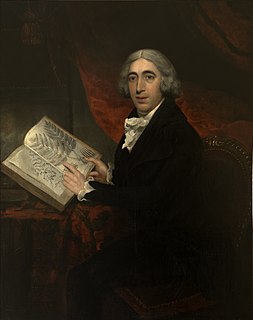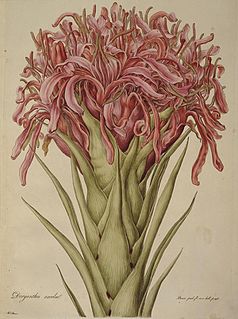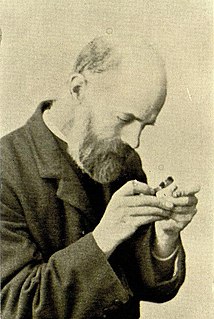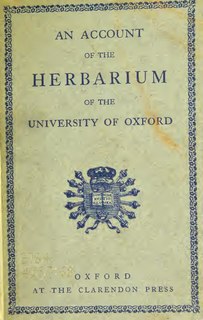Related Research Articles

Sir James Edward Smith was an English botanist and founder of the Linnean Society.

Johann Jacob Dillen Dillenius was a German botanist.

Graham Stuart Thomas, was an English horticulturist, who is likely best known for his work with garden roses, his restoration and stewardship of over 100 National Trust gardens and for writing 19 books on gardening, many of which remain classics today. However, as he states in the Preface to his outstanding book, The Rock Garden and its Plants: From Grotto to Alpine House, "My earliest enthusiasms in gardening were for....alpines." p8

Ferdinand Lucas Bauer was an Austrian botanical illustrator who travelled on Matthew Flinders' expedition to Australia.

The Botanical Magazine; or Flower-Garden Displayed, is an illustrated publication which began in 1787. The longest running botanical magazine, it is widely referred to by the subsequent name Curtis's Botanical Magazine.

Professor David John Mabberley, is a British-born botanist, educator and writer. Among his varied scientific interests is the taxonomy of tropical plants, especially trees of the families Labiatae, Meliaceae and Rutaceae. He is perhaps best known for his plant dictionary The plant-book. A portable dictionary of the vascular plants. The third edition was published in 2008 as Mabberley's Plant-book, for which he was awarded the Engler Medal in Silver in 2009. As of June 2017 Mabberley's Plant-book is in its fourth edition.

George Lincoln Goodale was an American botanist and the first director of Harvard’s Botanical Museum. It was he who commissioned the making of the University's legendary Glass Flowers collection.

The Field Elm cultivar Ulmus minor 'Plotii', commonly known as Lock Elm or Lock's Elm, Plot's Elm or Plot Elm, and first classified as Ulmus sativaMill. var. Lockii and later as Ulmus plotii by Druce in 1907-11, is endemic mainly to the East Midlands of England, notably around the River Witham in Lincolnshire, in the Trent Valley around Newark-on-Trent, and around the village of Laxton, Northamptonshire. Ronald Melville suggested that the tree's distribution may be related to river valley systems, in particular those of the Trent, Witham, Welland, and Nene. Two further populations existed in Gloucestershire. It has been described as Britain's rarest native elm, and recorded by The Wildlife Trust as a nationally scarce species.

The Harvard University Herbaria and Botanical Museum are institutions located on the grounds of Harvard University at 22 Divinity Avenue, Cambridge, Massachusetts. The Botanical Museum is one of three which comprise the Harvard Museum of Natural History.

Oakes Ames was an American biologist specializing in orchids. His estate is now the Borderland State Park in Massachusetts. He was the son of Governor of Massachusetts, Oliver Ames, and grandson of Congressman Oakes Ames.
George Claridge Druce, MA, LLD, JP, FRS, FLS was an English botanist and a Mayor of Oxford.

Mary Agnes Chase (1869–1963) was an American botanist who specialized in agrostology, the study of grasses. Although lacking formal education past elementary school, Chase was able to rise through the ranks as a botanist at the United States Department of Agriculture, beginning as an illustrator under the tutelage of Albert Spear Hitchcock and eventually becoming a senior botanist, overseeing the USDA's Systematic Agrostology department. Chase conducted fieldwork abroad in Europe and South America and published several books, including the First Book of Grasses: The Structure of Grasses Explained for Beginners, which was later translated into Spanish and Portuguese. Additionally, Chase was recognized for her work as an agrostologist with numerous awards, including a Certificate of Merit issued by the Botanical Society of America in 1956. Chase was also an active suffragist and took part in demonstrations organized by the Silent Sentinels, a group established by members of the National Woman's Party. Although Chase's participation in this movement was not always well received by her peers in the scientific community, she nevertheless remained committed to the cause of women's suffrage.

Rev. William Richardson Linton, Corpus Christi College, M.A., was an English botanist and vicar of the parish of Shirley, Derbyshire. He was regarded as one of the leading batologists of his day.

Margaret Meen (1751-1834) was an English watercolour painter. Known for botanical illustrations, Margaret Meen taught this art to Queen Charlotte and her daughters; as well as to the four daughters of Joshua Smith, MP.

Emily Stackhouse was a 19th-century Cornish botanical artist and plant collector. She collected and painted flowers and mosses throughout the British isles, and her work was widely reproduced in a series of popular books issued by the Society for Promoting Christian Knowledge. Many of her watercolours show that she had collected and depicted specific plants years earlier than their accredited discovery in Cornwall, and it is now acknowledged that she collected and classified nearly all of the British mosses.

Charles Alexander Johns (1811–1874) was a 19th-century British botanist and educator who was the author of a long series of popular books on natural history.
The Wild Flower Society is a society for a wide range of flower enthusiasts, from serious botanists to beginners. It arranges field trips and meetings, publishes the Wild Flower Magazine, offers prizes and has a children's section. Most members keep diaries of observations, and may photograph plants.
Joanna Charlotte Davynée Flemmich was an English plant collector and painter. She was a well-known figure in British botanical circles in the first half of the twentieth century and was active in various societies including the Botanical Society of the British Isles which made her an honorary member in 1950. During this period she was generally known as Lady Davy or, on formal records, Johanna Charlotte Davy.

Fielding-Druce Herbarium, part of the Department of Biology, University of Oxford, located on South Parks Road, in Oxford, England. A herbarium is a collection of herbarium sheets, with a dried pressed specimen of the botanic species, whether they were bound into a book by one dedicated individual, or have been amassed into huge collections. They are like plant ID cards. As paper was expensive, multiple specimens are normally mounted on one sheet. The 2 cores of the Herbarium collection, are bequeathed to the University from Henry Fielding (1805-1851) containing a non-British and Irish collection. It also covers most taxonomic groups and geographical areas. It is particularly rich in nineteenth century material from the Americas and south and south east Asia. The other core a British and Irish collection from George Claridge Druce (1850-1932) in 1932, this is particularly rich in specimens from Oxfordshire, Buckinghamshire and Berkshire. Other collections were added later.
Alice Margaret Coats was a British watercolor painter, engraver, woodcut artist, and author. She was a member of the Central Club of Wood-Engravers in Colour. She is best known for botanical and horticultural works.
References
- ↑ Ogilvie, Marilyn; Harvey, Joy (2003). The Biographical Dictionary of Women in Science: Pioneering Lives From Ancient Times to the Mid-20th Century. Routledge. p. 1305. ISBN 9781135963439.
- ↑ Harris, S. A. (2 March 2009). "The Trower collection: Botanical watercolours of an Edwardian lady". Journal of the History of Collections. 22 (1): 115–128. doi:10.1093/jhc/fhn019.
- ↑ Way, Twigs (2005). Virgins, Weeders and Queens: A History of Women in the Garden. The History Press. ISBN 9780752495781.